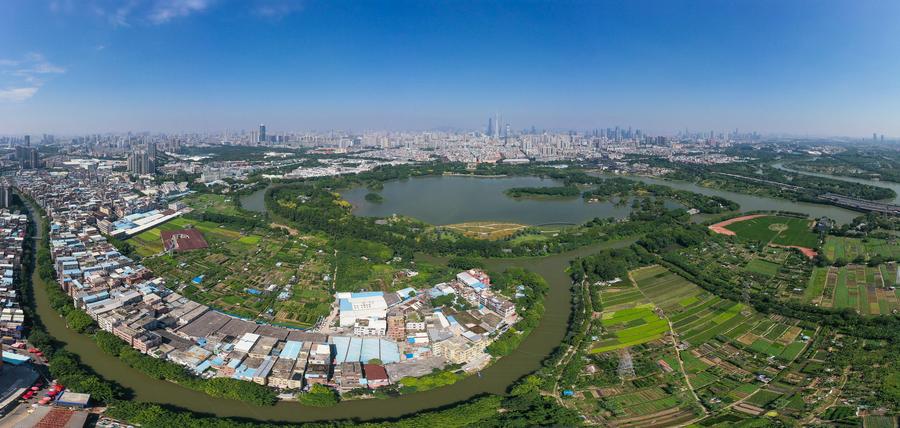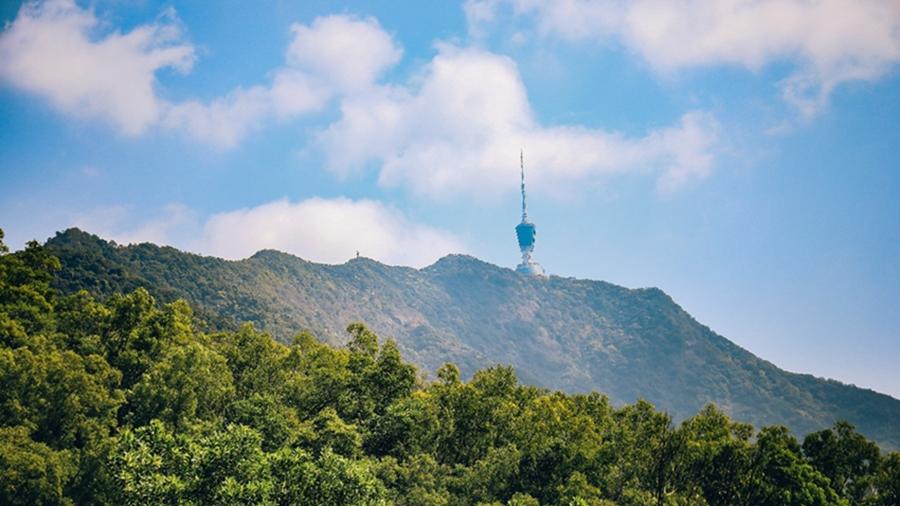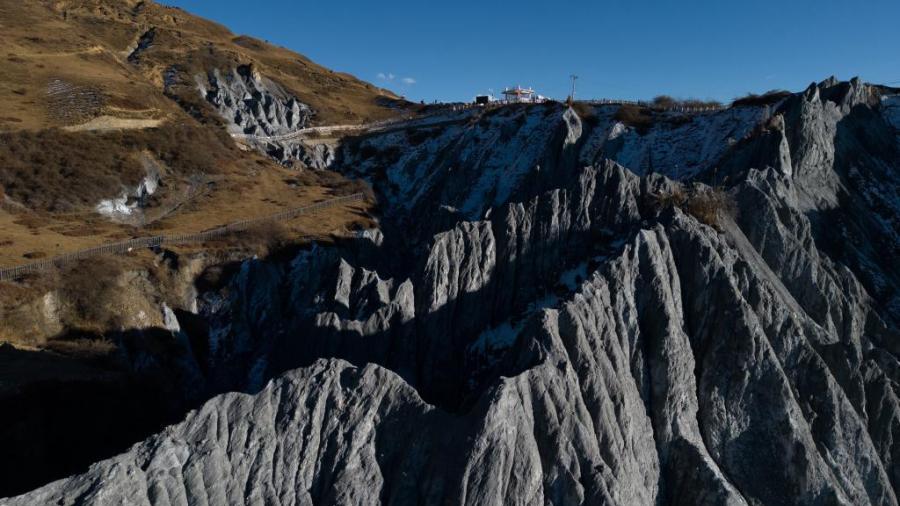Letter from China: Green is the new gold -- a Guangzhou story

This aerial photo taken on Oct. 26, 2021 shows a view of Haizhu Wetland in Guangzhou, south China's Guangdong Province. (Xinhua/Liu Dawei)
GUANGZHOU, Dec. 5 (Xinhua) -- Almost every visitor to New York City schedules a stop at Central Park. This lush haven, right in the heart of one of the world's busiest megacities, offers a world apart from the city's high-rises and fast-paced hustle.
In the bustling heart of Guangzhou, the capital city of southern China's Guangdong Province -- a pioneer in leading China's charge into modernization -- also lies a vast green space that's even more impressive. It's called Haizhu Wetland and is three times as large as Central Park. On my recent trip to Guangzhou, I got to learn some of the stories behind it.
Nestled in China's economic powerhouse the Pearl River Delta, Guangzhou has witnessed the region's meteoric rise. But with this rapid economic boom came a heavy environmental toll. The early encounter with environmental issues like air and water pollution was a wake-up call for local government, pushing them to shift to a green and sustainable development path.
The Haizhu Wetland was originally a fruit orchard. In 2012, faced with the choice between huge profits from commercial land development and ecological protection, local authorities rather far-sightedly opted for the latter, turning the orchard into a wetland park that's now under permanent protection.
By far the world's largest urban central wetland park in a first-tier city, the Haizhu Wetland is now a living, breathing example of how nature can coexist with urban development. It's not just a park. It's a vital green lung for the city, improving air quality, moderating the urban climate, and offering a habitat for wildlife within a concrete jungle.
After over a decade of restoration, the biodiversity in the wetland has flourished, with 835 types of plant and 187 species of bird now calling it home. Two new beetle species were also discovered here, which is an important indicator of the local ecosystem.
What was once considered a costly decision has proven to be an investment in long-term, healthy development. The choice to prioritize ecology has paid off, boosting the area's appeal and fostering a sustainable and vibrant business ecosystem that continues to thrive.
The wetland area is now a hub for AI and digital businesses. Big names like Tencent and Alibaba have settled in the nearby Pazhou Artificial Intelligence and Digital Economy Experimental Zone, which has pulled in a whopping 86.7 billion yuan (about 12 billion U.S. dollars) in total investment.
Old factories and workshops around the wetland have also gotten a makeover, transforming into cool, creative art spaces. On the weekends, it's like a mini-vacation spot, as residents enjoy a relaxing time paddling canoes and kayaks on Haizhu Lake.
Di Bo, the Party secretary of Haizhu District's forestry and wetland administration, shared with me that they are exploring ways to further tap into the economic value behind the ecological data of the wetland and surrounding areas, hoping to create a batch of tradable data products to further unleash the economic potential of the wetland.
In Haizhu Wetland, I see how Guangzhou is sowing the seeds of sustainability through its Beautiful Guangzhou Initiative, a local implementation of a Beautiful China, a top-level development blueprint detailing specific targets for a wide range of sectors for the nation's green and high-quality growth.
In January, the Communist Party of China Central Committee and the State Council jointly issued guidelines to comprehensively promote the development of a Beautiful China. The guidelines called for the Guangdong-Hong Kong-Macao Greater Bay Area to become a pilot zone for the construction of a Beautiful China.
To fulfill the goal, Guangzhou, home to more than 18 million permanent residents, has been on a quest to pioneer innovative solutions for pollution control and green transformation in megacities.
Take the Fushan Circular Economy Industrial Park for instance, which handles an average of 5,000 tonnes of household waste daily. It's the first of its kind to repurpose a waste-to-energy power plant into a national 3A scenic area. Here, visitors can savor their coffee atop a chimney tower, taking in the panoramic views of the verdant hillsides, with no trace of waste odors in the air.
The Canton Fair, considered a major gauge of China's foreign trade, achieved carbon neutrality in 2024. And the emissions from coal-fired power plants in the city have been reduced to levels that are even lower than those of natural gas.
"We aspire to lead with the vision of a Beautiful Guangzhou, pioneering the way for building a Beautiful China in megacities, and ultimately fostering an economic model that aligns with this national initiative," Wang Baosen, head of the Guangzhou municipal ecology and environment bureau, shared with me.
Photos
Related Stories
Copyright © 2024 People's Daily Online. All Rights Reserved.









